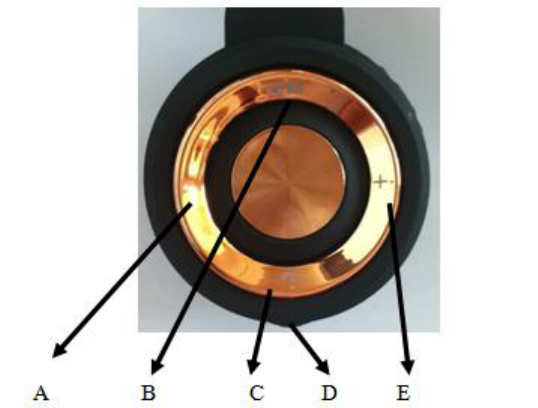Linpa Technology LHB15 Bluetooth Headphone User Manual
Shenzhen Linpa Technology Co.,Ltd Bluetooth Headphone Users Manual
Users Manual

LHB15 USER MANUAL
1.Location of Controls
A:previous song/decrease volume
previous song:quick press
decrease volume:long press
B:ON/OFF:long press
play/pause: quick press
C: answer call:quick press once
dial number: quick press continuously twice
D:Micro USB charging port
E:next song/Increase volume
next song:quick press once
increase volume:long press
2. How to use it?
A.Pair the headphones with a bluetooth enabled device
Turn the headphone On by long press the power switch,a tone will be heard and the LED indicator
light will alternately flash RED and BLUE.
Keep your bluetooth headphone and bluetooth enabled device within 3feet of each other during the
pairing process,set your mobile phone or other bluetooth enabled device to search for Bluetooth
devices.
When the bluetooth enabled device finds the headphone,select” SBT558” from the list of found
devices.If required,enter the password 0000.Select Ok or Yes to pair with your device.
After a successful registration,a tone will be heard and the LED indicator light will slowly blink
BLUE.
Note: if you would like to connect the headphones to another device,you must unpair the
headphones from the currently paired device first.On your device’s bluetooth settings,select
“PBT89”,then select “unpair”.When the headphones have been unpaired,it automatically goes into
pairing mode again.
B. Using as wired headphones
Switch On the headphone.Connect the one end of the included 3.5mm Aux cable to the Aux In
jack on the headphones,and the other end of the cable to an external device’s headphone
jack(smartphone,tablet,computer,or MP3 player).Open a media player on your device and click on
play to start playing your music. Use the controls on your connected device to control music
playback and volume(Or you can use the volume control on the bluetooth headphone to control the
volume,and control music playback by using the controls on your connected device).
C.Charging the bluetooth headphones
Connect the small end of the Micro USB cable to the charging port on the headphones. Connect
the large end of the Micro USB cable to your computer’s USB port or an AC adaptor(not included).
The LED indicator light turns RED when charging.It will turn off when fully charged.
3.Features:
- DRIVER UNIT: 40MM
- BUILT-IN BLUETOOTH CHIPSET: JL-BT 2.1 STEREO
- PLAYING TIME: 12-14H
- STANDBY TIME: 18-20H
- BATTERY: 480MAH
- OPERATION RANGE: 10-12M
- FREQUENCY RANGE: 2.4GHZ-2.48GHZ
- BUILT-IN MIC
- AUX PORT
- VOLUME CONTROL/MUSIC
CONTROL/PLAY/PAUSE/ANSWER/HANG-UP

FCC warning statement
This equipment has been tested and found to comply with the limits for a Class B
digital device, pursuant to part 15 of the FCC Rules. These limits are designed to
provide reasonable protection against harmful interference in a residential installation.
This equipment generates, uses and can radiate radio frequency energy and, if not
installed and used in accordance with the instructions, may cause harmful interference
to radio communications. However, there is no guarantee that interference will not
occur in a particular installation. If this equipment does cause harmful interference to
radio or television reception, which can be determined by turning the equipment off
and on, the user is encouraged to try to correct the interference by one or more of the
following measures:
• Reorient or relocate the receiving antenna.
• Increase the separation between the equipment and receiver.
• Connect the equipment into an outlet on a circuit different from that to which the
receiver is connected.
• Consult the dealer or an experienced radio/TV technician for help.
Caution: Any changes or modifications to this device not explicitly approved by
manufacturer could void your authority to operate this equipment.
This device complies with part 15 of the FCC Rules. Operation is subject to the
following two conditions: (1) This device may not cause harmful interference, and (2)
this device must accept any interference received, including interference that may
cause undesired operation.